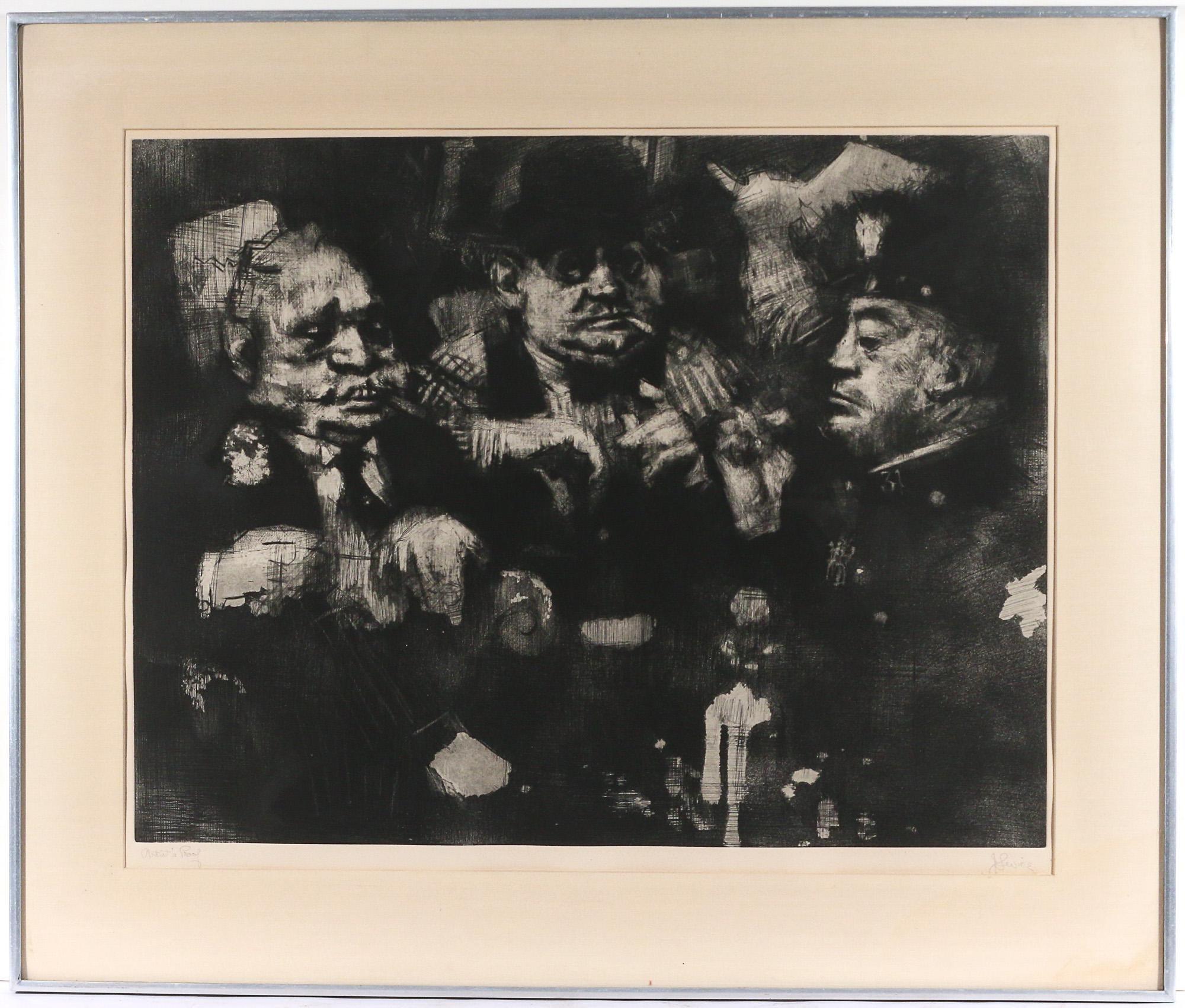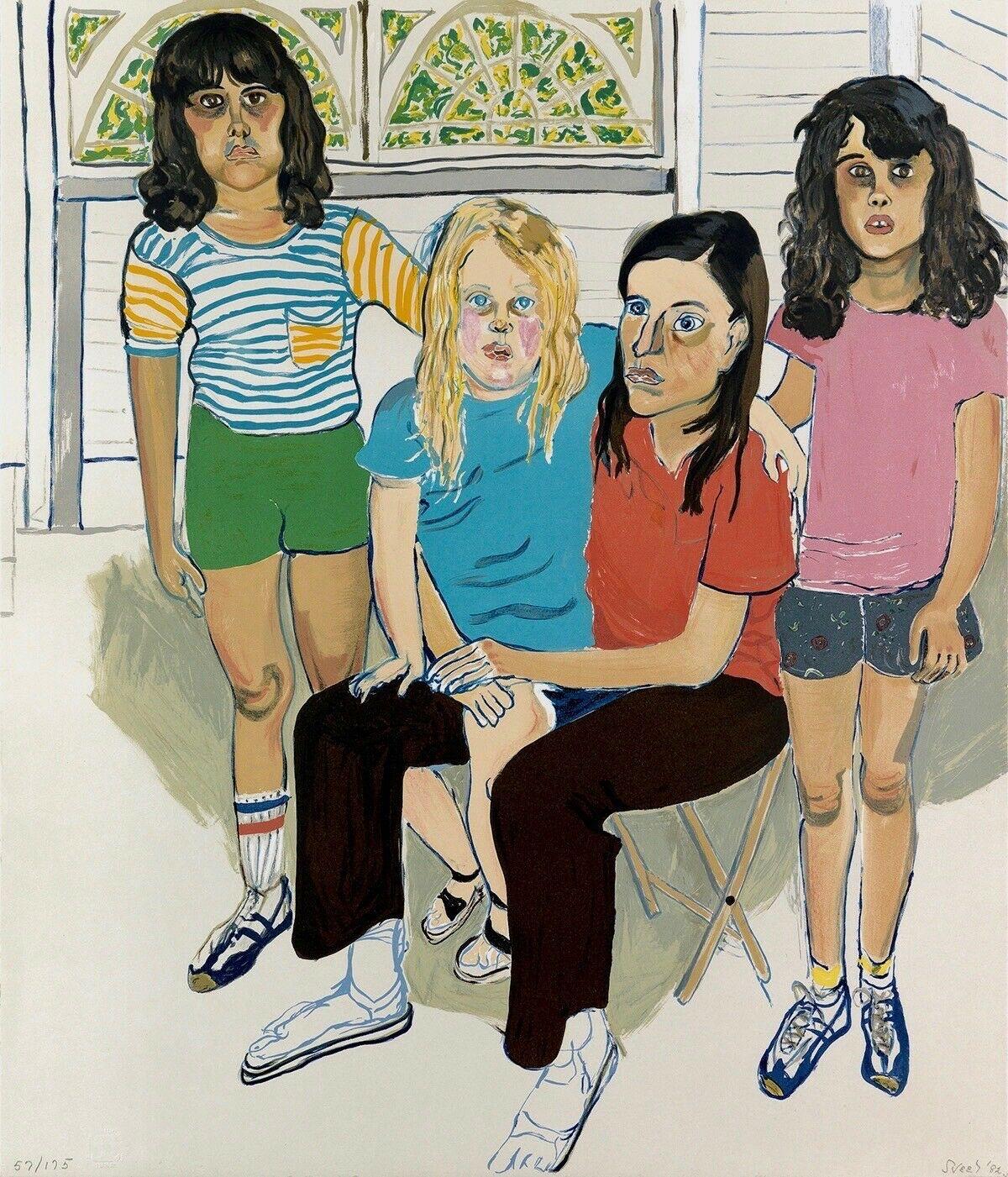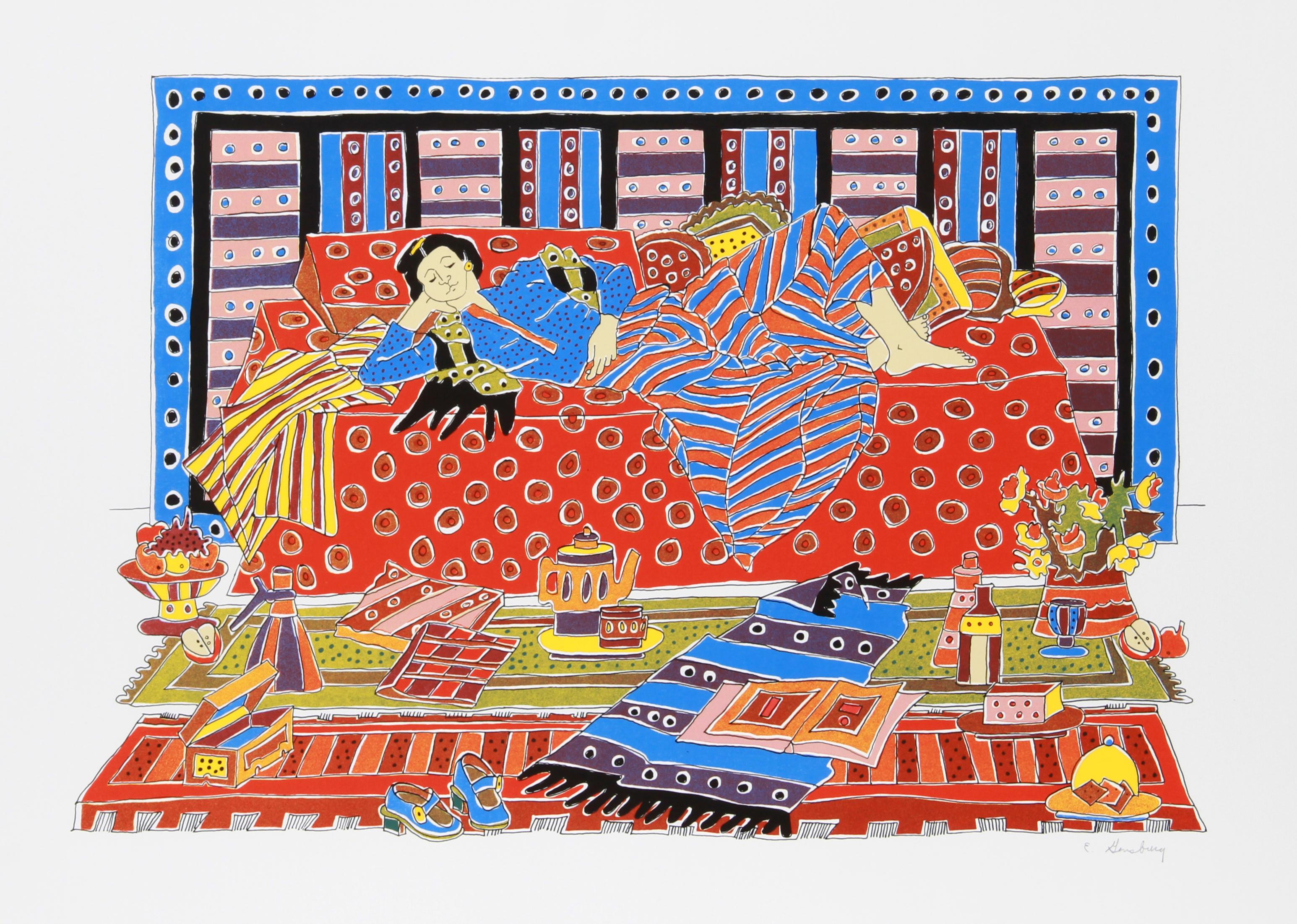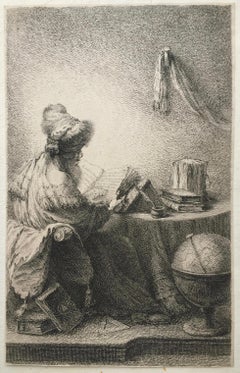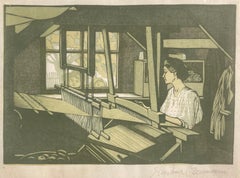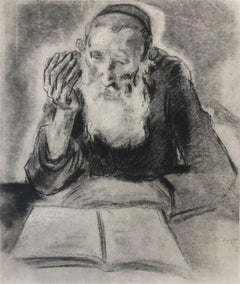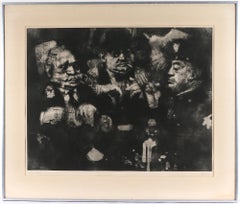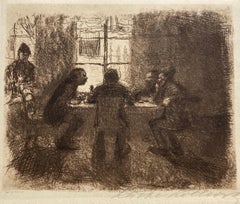
FOUR MEN IN THE PUB (VIER MANNER IN DER KNEIPE) - ****FIRST STATE****
View Similar Items
Want more images or videos?
Request additional images or videos from the seller
1 of 8
Käthe KollwitzFOUR MEN IN THE PUB (VIER MANNER IN DER KNEIPE) - ****FIRST STATE****1892-3
1892-3
About the Item
- Creator:Käthe Kollwitz (1867-1945, German)
- Creation Year:1892-3
- Dimensions:Height: 5.125 in (13.02 cm)Width: 6.125 in (15.56 cm)
- Medium:
- Movement & Style:Brücke
- Period:
- Condition:
- Gallery Location:Santa Monica, CA
- Reference Number:1stDibs: LU411310489402
About the Seller
5.0
Recognized Seller
These prestigious sellers are industry leaders and represent the highest echelon for item quality and design.
Platinum Seller
These expertly vetted sellers are 1stDibs' most experienced sellers and are rated highest by our customers.
Established in 1977
1stDibs seller since 2016
262 sales on 1stDibs
Typical response time: 1 hour
Associations
International Fine Print Dealers Association
More From This SellerView All
- (PHILOSOPHER READING)By Ferdinand BolLocated in Santa Monica, CACircle of or a follower of Ferdinand Bol - (1616-1680) (PHILOSOPHER READING) ca 1700 Etching on thin laid paper attached to support sheet at the top sh...Category
18th Century Old Masters Figurative Prints
MaterialsEtching
- THE RUG WEAVERBy Gustave BaumannLocated in Santa Monica, CAGUSTAVE BAUMANN (1881 – 1971) THE RUG WEAVER, 1910 (Chamberlain 26) Color woodcut signed in pencil. Unnumbed from an edition 100 as published in the Hills o’ Brown...Category
1910s American Modern Figurative Prints
MaterialsWoodcut
- THE WAGON SHOPBy Gustave BaumannLocated in Santa Monica, CAGUSTAVE BAUMANN (1881 – 1971) THE WAGON SHOP, 1910 (Chamberlain 24) Color woodcut signed in pencil. Unnumbed from an edition 100 as published in the Hills o’ Brown...Category
1910s Modern Figurative Prints
MaterialsWoodcut
- DEATH OF THE FIRST BORN - Proof - Magnificent Large Scale MezzotintBy John MartinLocated in Santa Monica, CAJOHN MARTIN (1789 – 1854) DEATH OF THE FIRST BORN, Dedicated to His Majesty King Louise Philippe, King of the French, as a Tribute of the Artist’s Grateful...Category
1830s Old Masters Interior Prints
MaterialsMezzotint
- The Print ShopBy Gustave BaumannLocated in Santa Monica, CAGUSTAVE BAUMANN (1881 – 1971) THE PRINT SHOP 1910 (Chamberlain 27) Color woodcut signed in pencil. Unnumbed from an edition 100 as published in the Hills o’ Brown Portfolio, (plate 11 of 12). Image 9 x 13 1/8, sheet 10 ¼ x 13 7/8 with deckle edge at the bottom. The print portrays the Brown County...Category
1910s American Modern Interior Prints
MaterialsLithograph
- THE BEGGERS - possibly unique state exampleBy James Abbott McNeill WhistlerLocated in Santa Monica, CAJAMES ABBOTT McNEILL WHISTLER (1834 – 1903) THE BEGGARS 1879-80 (Glasgow 190 x/xvii: K.194 ii/ix?: M.191: W.159) Etching and drypoint, from “Venice, a Series ...Category
1880s American Impressionist Interior Prints
MaterialsEtching
You May Also Like
- Judaica Jewish Shtetl Etching Yeshiva Talmudic Study Vintage Chassidic Art PrintBy Paul JeffayLocated in Surfside, FL"Qui a raison?" Chassidic boy, Yeshiva student with open book. Judaica, Jewish scenes from a ghetto. Saul Yaffie, a.k.a. Paul Jeffay, (1898–1957) was a Scottish Jewish artist. Known for his charming French street scenes as well as his judaica work. This is signed in the plate and dated 1931 in the print. This is done in a style similar to the works of the early Bezalel School artists Hermann Struck and Jakob Steinhardt. This lithograph, by artist Paul Jeffay depicts a Judaic Shtetl interior scene with great charm and sensitivity. Saul Yaffie was born in Blythswood, Glasgow on 29 April 1898. His mother was Kate Yaffie (née Karkonoski), and his father, Bernard Yaffie, was a master tailor. Like many Russian Jews, Kate and Bernard Yaffie fled persecution in Russia during a wave of anti-Jewish pogroms triggered by the assassination of Tsar Alexander II in 1881. Saul's father was naturalised as a British citizen by the time that Saul himself was three; a Bernard Yaffie is recorded as living at Abbotsford Place in the old Gorbals, where the young Saul spent the early years of his childhood. The Yaffies were not unique in their situation: the Gorbals was the centre of Scotland's Jewish community and home to a large proportion of Glasgow's immigrants throughout the early 20th century. Over time, there was a movement to some of the more affluent communities in Glasgow, such as Pollokshields and Garnethill, as many Jewish families gradually improved their social and economic situation. Like these, the Yaffies also experienced a time of good fortune, moving to a more agreeable address on Sinclair Drive, Cathcart as Bernard's tailoring business prospered. Saul attended day classes in drawing and painting, modelling, and life drawing at The Glasgow School of Art from 1912 to 1919. During the First World War, he was required to interrupt his studies to serve in the King's Own Scottish Borderers in 1916/17. Although subject to military conscription, Yaffie reached the rank of corporal during his service. Prior to his conscription Yaffie engaged in munitions work, something that was recorded in the GSA's student registers. The post-war economic depression that affected the country during the 1920s, also affected the Yaffie family directly: Bernard Yaffie's business suffered greatly, and the family eventually emigrated to Canada. Saul did not emigrate with his family, choosing instead to stay in Europe, and relocate to jazz age Paris where he continued his artistic practice. Now married, Saul sought to escape persecution in Europe by returning to the UK before the Second World War with his wife, Estusia. The two settled in Manchester, but returned to France after the war. In his memoires ‘Bronze in My Blood’, German-born sculptor Benno Schotz describes a Saul ‘Yaffe’, one of only three other Jewish students who attended The Glasgow School of Art at the time. (Schotz himself was exempt from joining the forces because he was ‘not yet a British subject’, and was engaged in war work in the drawing office of John Brown’s shipyards). On the outbreak of the war, Schotz writes, Yaffie won a poster competition to be displayed in Glasgow tramcars at the beginning of the 1914-18 war – his winning design depicted a woman with a child in her arms, fleeing from a fire behind her. While on leave from service, the young Saul told Schotz he had briefly been stationed in the same unit as Jewish American sculptor Jacob Epstein. This was most likely the 38th Battalion of the Royal Fusiliers, also known as ‘the Jewish Legion’, one of five Jewish battalions raised during WW1. ‘He told me how incongruous it was’, remembers Schotz, ‘to See Epstein scrubbing the floor of their hut, with a large diamond ring on his finger’. His work is included in the collection of the Ben Uri Museum in London along with Lucian Freud, David Bomberg, Mark Gertler, Josef Herman, Jankel Adler, Feliks Topolski...Category
20th Century Expressionist Interior Prints
MaterialsEtching
- Judaica Jewish Shtetl Etching Hasidic Rabbi at Study Vintage Chassidic PrintBy Paul JeffayLocated in Surfside, FLOlder Chassidic rabbi learning with open book, Judaica, Jewish scenes from a ghetto. Saul Yaffie, a.k.a. Paul Jeffay, (1898–1957) was a Scottish Jewish artist. Known for his charming French street scenes as well as his judaica work. This is signed in the plate and dated 1931 in the print. This is done in a style similar to the works of the early Bezalel School artists Hermann Struck and Jakob Steinhardt. This lithograph, by artist Paul Jeffay depicts a Judaic Shtetl interior scene with great charm and sensitivity. Saul Yaffie was born in Blythswood, Glasgow on 29 April 1898. His mother was Kate Yaffie (née Karkonoski), and his father, Bernard Yaffie, was a master tailor. Like many Russian Jews, Kate and Bernard Yaffie fled persecution in Russia during a wave of anti-Jewish pogroms triggered by the assassination of Tsar Alexander II in 1881. Saul's father was naturalised as a British citizen by the time that Saul himself was three; a Bernard Yaffie is recorded as living at Abbotsford Place in the old Gorbals, where the young Saul spent the early years of his childhood. The Yaffies were not unique in their situation: the Gorbals was the centre of Scotland's Jewish community and home to a large proportion of Glasgow's immigrants throughout the early 20th century. Over time, there was a movement to some of the more affluent communities in Glasgow, such as Pollokshields and Garnethill, as many Jewish families gradually improved their social and economic situation. Like these, the Yaffies also experienced a time of good fortune, moving to a more agreeable address on Sinclair Drive, Cathcart as Bernard's tailoring business prospered. Saul attended day classes in drawing and painting, modelling, and life drawing at The Glasgow School of Art from 1912 to 1919. During the First World War, he was required to interrupt his studies to serve in the King's Own Scottish Borderers in 1916/17. Although subject to military conscription, Yaffie reached the rank of corporal during his service. Prior to his conscription Yaffie engaged in munitions work, something that was recorded in the GSA's student registers. The post-war economic depression that affected the country during the 1920s, also affected the Yaffie family directly: Bernard Yaffie's business suffered greatly, and the family eventually emigrated to Canada. Saul did not emigrate with his family, choosing instead to stay in Europe, and relocate to jazz age Paris where he continued his artistic practice. Now married, Saul sought to escape persecution in Europe by returning to the UK before the Second World War with his wife, Estusia. The two settled in Manchester, but returned to France after the war. In his memoires ‘Bronze in My Blood’, German-born sculptor Benno Schotz describes a Saul ‘Yaffe’, one of only three other Jewish students who attended The Glasgow School of Art at the time. (Schotz himself was exempt from joining the forces because he was ‘not yet a British subject’, and was engaged in war work in the drawing office of John Brown’s shipyards). On the outbreak of the war, Schotz writes, Yaffie won a poster competition to be displayed in Glasgow tramcars at the beginning of the 1914-18 war – his winning design depicted a woman with a child in her arms, fleeing from a fire behind her. While on leave from service, the young Saul told Schotz he had briefly been stationed in the same unit as Jewish American sculptor Jacob Epstein. This was most likely the 38th Battalion of the Royal Fusiliers, also known as ‘the Jewish Legion’, one of five Jewish battalions raised during WW1. ‘He told me how incongruous it was’, remembers Schotz, ‘to See Epstein scrubbing the floor of their hut, with a large diamond ring on his finger’. His work is included in the collection of the Ben Uri Museum in London along with Lucian Freud, David Bomberg, Mark Gertler, Josef Herman, Jankel Adler, Feliks Topolski...Category
20th Century Expressionist Figurative Prints
MaterialsPaper, Etching
- American Modernist "Feast of Pure Reason" Aquatint Mezzotint Etching WPA ArtistBy Jack LevineLocated in Surfside, FLJack Levine, American, 1915–2010 The Feast of Pure Reason, 1970 Etching, mezzotint and aquatint on copper in black ink. 20 w. 25 in., sight overall: 27 x 31.75 in., matted. Depict...Category
1970s Expressionist Figurative Prints
MaterialsMezzotint, Etching, Aquatint
- The Family, Alice NeelBy Alice NeelLocated in Fairfield, CTArtist: Alice Neel (1900-1984) Title: The Family Year: 1982 Medium: Lithograph on Arches paper Edition: 57/175, plus proofs Size: 31.25 x 27 inches Condition: Excellent Inscription: ...Category
1980s Expressionist Figurative Prints
MaterialsLithograph
$11,600 Sale Price20% Off - Lady RoseLocated in Ibadan, OyoLady Rose is an original painting by Lawal Ibrahim. Ibrahim created Lady Rose with a Colored pen, watercolor, and fabrics on 24W by 36H inches of paper. "Lady Rose" is a captivating...Category
21st Century and Contemporary Expressionist Figurative Prints
MaterialsFabric, Paper, Watercolor, Ballpoint Pen
- Klimt, Lithograph by Estelle GinsburgLocated in Long Island City, NYKlimt Estelle Ginsburg, American Date: circa 1979 Screenprint, signed and numbered in pencil Edition of 500, AP 50 Size: 21.5 in. x 29 in. (54.61 cm x 73.66 cm)Category
1970s Expressionist Figurative Prints
MaterialsLithograph


